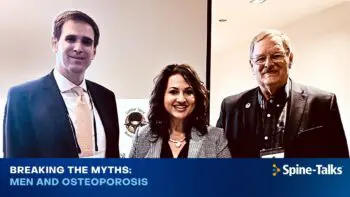Radiculopathy is a painful condition where a nerve root in the spine becomes pinched or irritated. This can cause radiating pain, numbness, and weakness in the area where the nerve travels, such as the arms or legs.
Common Causes
- Herniated disc: When a disc in the spine bulges out and presses on a nerve.
- Spinal stenosis: Narrowing of the spaces in the spine, putting pressure on the nerves.
- Bone spurs: Extra bone growths that can press on nerves.
- Injury: Trauma to the spine from accidents or falls.
- Arthritis: Inflammation of the joints in the spine, which can narrow the space for nerves.
Symptoms
- Pain that radiates from the spine to the arms or legs.
- Numbness or tingling in the affected limb.
- Muscle weakness in the affected area.
- Burning or sharp pain.
- Difficulty moving the affected limb.
Diagnostic Tests
- Physical exam: The doctor checks for pain, range of motion, muscle strength, and reflexes.
- X-rays: Pictures of the spine to see bone alignment and any bone spurs.
- MRI or CT scan: Detailed images of the spine to see the discs, nerves, and any compression.
- Electromyography (EMG): Tests the electrical activity of muscles to see how well the nerves are working.
Treatment Options
Non-Surgical:
- Medications: Over-the-counter pain relievers or prescription medications to reduce pain and inflammation.
- Physical therapy: Traction to relieve nerve pressure. Exercises to strengthen muscles and improve flexibility.
- Injections: Steroid injections to reduce inflammation and pain.
- Heat and ice therapy: Applying heat or ice to reduce pain and swelling.
Surgical:
- Microdiscectomy: A less invasive procedure to remove the herniated part of the disc.
- Discectomy: Removing the part of the disc that is pressing on the nerve.
- Laminectomy: Removing part of the vertebra to create more space for the nerve.
- Spinal fusion: Joining two or more vertebrae to stabilize the spine, combined with decompression of the pinched nerve(s).
Common Conditions That Can Cause Similar Symptoms
- Sciatica: Pain that travels along the sciatic nerve from the lower back down the leg.
- Peripheral neuropathy: Damage to the peripheral nerves causing weakness and pain.
- Multiple sclerosis: A disease that affects the central nervous system.
- Carpal tunnel syndrome: Compression of the median nerve in the wrist.
When to See the Doctor
- If you have persistent pain that radiates from your spine to your arms or legs.
- If you experience numbness, tingling, or weakness in your limbs.
- If the pain interferes with your daily activities or sleep.
- If home remedies and over-the-counter medications do not provide relief.
What to Ask the Doctor
- What is causing my symptoms?
- What treatment options are available?
- How long will it take to recover?
- What are the risks and benefits of surgery if needed?
- Are there specific exercises I should do or avoid?
Home Remedies for Mild Symptoms
- Exercise: Gentle exercises can help strengthen muscles and reduce pain.
- Stretching: Very gentle stretching can relieve muscle tension, but should not be continued if symptoms are made worse.
- Pain relief: Over-the-counter pain relievers like ibuprofen or acetaminophen can help with pain.
- Proper posture: Maintain good posture to reduce muscle strain.
- Heat or ice therapy: Applying heat or ice can reduce pain and swelling.
Understanding radiculopathy can help you know when to seek medical advice and what questions to ask your doctor. Early detection and treatment can help manage the condition and improve your quality of life.



